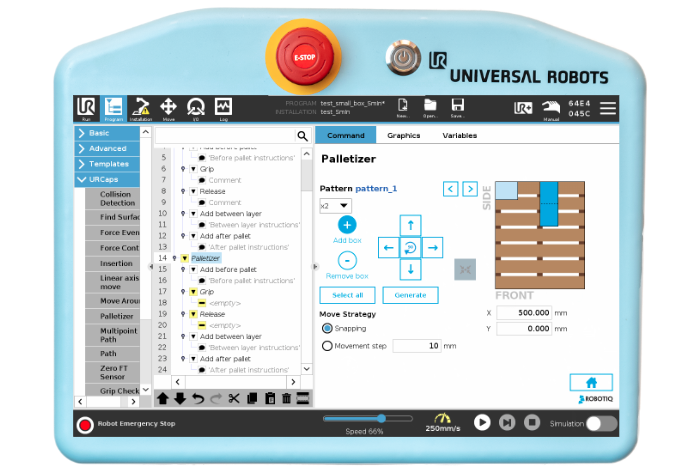Future-Proofing Production: Lessons from a Leading Meat Processor’s Automation Journey

Robotiq CEO Samuel Bouchard sat down with Josh Davis, senior channel sales manager, to discuss a leading meat producer’s automation journey.
Background
This Robotiq customer is a large meat processing facility that supplies some of the biggest fast food chains in the United States and globally. They have built their reputation as leaders in automation, continuously innovating to stay ahead in their industry. With a production setup already leveraging technology, they faced challenges in their end-of-line palletizing operations. The company operates 11 production lines with plans to scale up to 50 more, signaling significant growth potential.

Business Challenges
The key driver for automation was the growing demand from their high-profile fast food clients. The increasing production volume required a reliable solution to eliminate bottlenecks in their palletizing process. Relying solely on human labor was no longer a feasible option given the rising throughput demands. Additionally, maintaining profitability with tight margins from large clients necessitated operational efficiency.
Specific challenges included:
- Meeting the production forecasts for the next three to five years.
- Achieving a quick ROI by reducing labor costs and increasing production efficiency.
- Overcoming pressure to remain competitive while managing costs.
By addressing these challenges, the company aimed to ensure they could continue to scale while maintaining the high standards expected by their customers.
Why Was Robotiq’s Palletizing Solution a Good Fit?
Our palletizing solution provided the flexibility and scalability the customer needed. Key factors that made it the ideal choice included:
- Flexibility: The system could easily adapt to changing production needs, including SKU and box size adjustments. This capability was essential for a dynamic production environment with multiple lines.
- Compact Design: The space-efficient system fit seamlessly into their existing setup without requiring significant modifications.
- Ease of Use: The solution featured intuitive programming, making it simple for the customer's team to operate and maintain.
- Performance: During side-by-side testing, the solution outperformed competitors by an impressive margin, processing 10 more boxes per minute. This superior performance was a decisive factor.
- Local Support: Exceptional local support ensured the customer had access to expert guidance and troubleshooting whenever needed, further cementing their decision.
- Proven Track Record: The solution had been tried and tested in similar applications, providing confidence in its reliability and ROI potential.
Tips for Automating End-of-Line Palletizing
- Start Early: Delaying automation puts you at a disadvantage in a competitive market. Companies that adopted automation years ago are now scaling successfully with 10 to 20 units. If you haven’t automated yet, now is the time.
- Focus on Proven Solutions: Opt for standard, non-customized solutions with a short lead time and quick payback period. Proven products are less risky and deliver consistent results.
- Prioritize Flexibility: Choose a system that adapts to changing production needs, whether it’s new SKUs, box sizes, or line configurations.
- Leverage Local Support: Work with partners who can provide not just the best product but also strong local support to maximize system uptime and efficiency.
- Break the Cash Constraint Cycle: While investing in automation requires upfront capital, the ROI is often realized in a year or less, especially with multiple shifts. Investing now will save money and increase profitability in the long run.
Automation isn’t just a trend; it’s a necessity for companies aiming to stay competitive. The earlier you invest, the sooner you can reap the benefits of improved efficiency, reduced costs, and increased production capacity.








Leave a comment